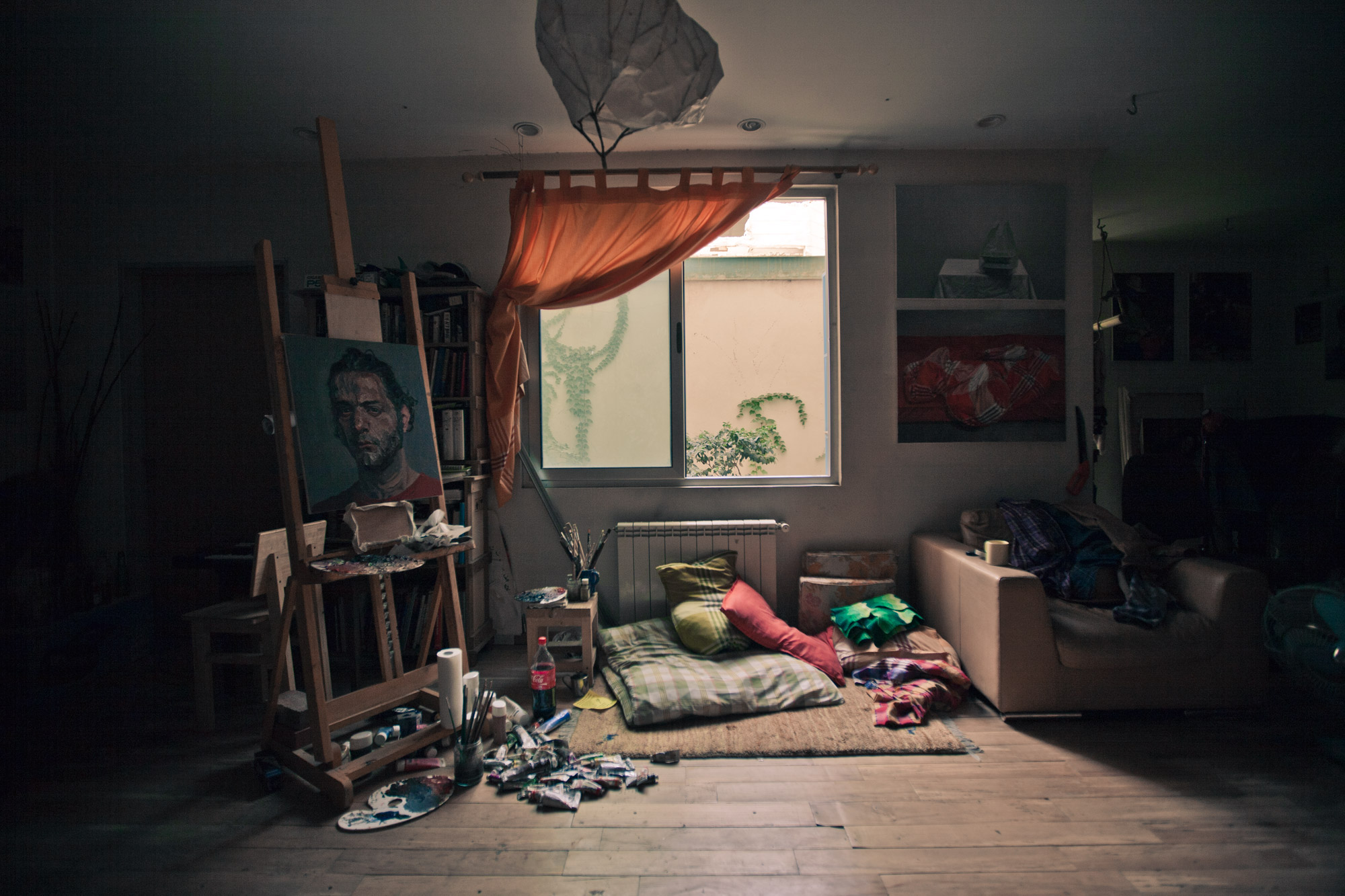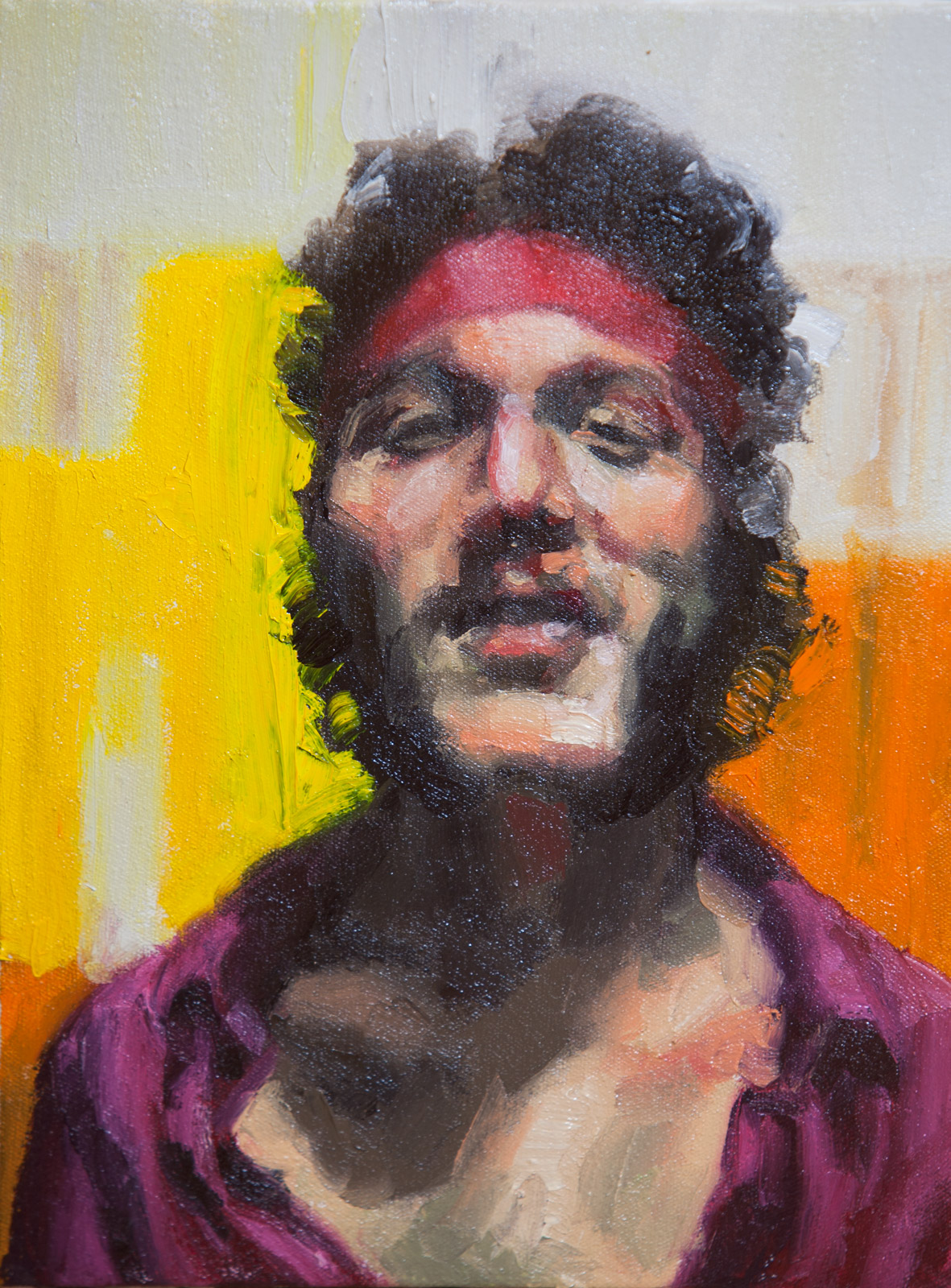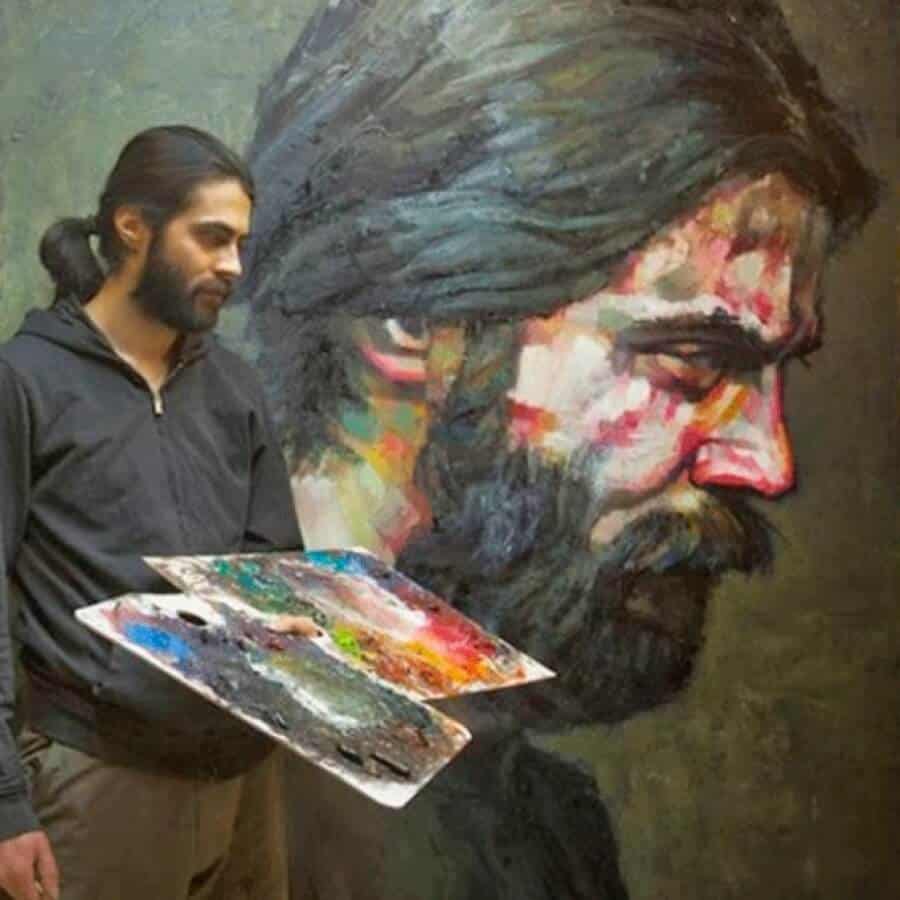Salman Khoshroo’s portraits seem so honest and yet impartial, that they make you quiver. Perhaps that happens because what he does in his paintings is laying human soul open. Psychology is his primary interest in art. Khoshroo’s studio is similar to a psychologist’s consulting room, and his paintings come as personal diagnosis for different people. Each face looking at you from his paintings is a face of an ordinary Iranian. Each face makes you wonder about what one man is able to understand about the other, and about how this comprehension is possible without words. These are the Khoshroo’s paintings that we choose to dedicate our photo project to. The interview with the Youth Time reveals what is motivating Salman Khoshroo and what is moving him forward.
Meet the Work of Salman Kosharo






“Looking at Iranian artist Salman Khoshroo’s paintings, you are immediately drawn in both by their exuberant technique and their sheer size—a typical canvas measures 1.6m by 1.6m. Working in his studio in Tehran with a large palette knife to spread oil colors directly on the canvas, Salman Khoshroo’s paintings harness figurative abstraction to evince very concise figures of emotional tension. “, from the website yatzer
Salman, could you tell us about yourself?
I was born in Tehran in 1983, but since my father was a diplomat I spent my early school years in New York. After a couple of years back in Tehran, we moved again, this time to Australia where I received my bachelor’s degree in digital art.
New York, Tehran and Canberra are very different places, and each offered a unique experience. But I think the constant continent shifting became tiresome for me and at the same time Iran always preserved its magical and nostalgic flavor for me.
So after finishing my studies I decided to reside permanently in Tehran, where I have lived for the past ten years.
After moving to Tehran I spent some years pursuing jobs related to my degree (3D animation and multimedia). But it soon became apparent to me that my work could not fulfill my creative ambitions. I started experimenting with photography, with the intention of studying the image while at the same time exploring my motherland. I held 3 photography exhibitions in Tehran.
My photography mostly consisted of abstract and minimal imagery that I found in the streets and alleys of Tehran.
The painting had always enchanted me with its power, and ever since I was a child I enjoyed wandering through the Metropolitan Museum and later the Australian National Gallery. Four years ago I started to test this medium and before I knew it, I had converted from the digital image to the painted image.
I have found my passion for painting and am very fond of this medium.
How can you describe your artistic style and had it changed over time?
For me painting is a process, this is partly due to the fact that paintings take a long time to complete. Also, I am a self-taught painter, so every painting in a sense is practice and discovery.
I have a lot of technical considerations as a painter, for example discovering the potential of new color can dramatically alter the progression of a work. Even a new face can be an inspiration to test out an entirely new technique.
I am very happy to let the paintings take their own direction, each painting is an experience and it becomes the stepping stone for the next painting.
You have done a lot of portraits. Does it mean that you are inspired by human faces?
Well I think images have the power to convey very complex and interwoven issues. I find communicating in this manner very appropriate. Of course, the human condition is a main theme of mine, I try to discover such issues through the experience and friendships I have with the people I paint.
For these people are mostly friends and through the process of painting them, I find occasion to contemplate their personalities and on being human as a whole.
Another side of my concerns as a painter has to do with the IMAGE in general, and how we visually perceive the world around us and also how we perceive man-made images.
What are the most Iranian features on your canvases?
I think Iran is a very unique country, in a very unique point in its history. I have lived in the West for about half of my life but my spiritual quest as an artist has brought me back to my country of origin. I arrived in Iran at 21, and it did not take long for my romantic vision of Iran to evaporate.
Although my initial expectations did not turn out to be true, I encountered a unique society that is going through a deep transition. A country that is inevitably becoming modern and coming to its senses regarding its revolutionary past. This atmosphere creates huge amounts of conflict and contradiction that are fertile ground for artistic creativity and expression.
Iran has always been inspirational to my art for me. I also feel responsible for the culture of my country as an artist, for at the end of the day if a change is it to come, it is up to us as individuals to do something about it.
What does define Iranian art?
This is a very complex issue. I think it has to do with the perspective of the future that we can see for our country. For me, Iran serves as a very important subject to research that has to be done locally, while keeping the global context in mind.
Many Iranian artists cater to western perspectives and expectations, while some just want to be artists regardless of their place of origin. In my opinion, we have to do justice to the variety of people and their worldviews in Iran.
Iran and the Iranian people of today are a very complex issue that even sociologists and psychologists can’t get their heads around. I don’t think it is the calling of art to pass rash judgments on such issues and to use art as a political tool. Of course, this is a personal opinion and I myself do not tend to pass judgment, but for me art is also a rigorous research and an honest reflection of the artist and his or her surroundings.
Your style shows men’s nature to the best advantage, but how often do you paint women, and what exactly inspires you in the female image?
I like to paint people with remarkable features. When choosing a model, I usually pay attention to their personality, anatomy, style of fashion, and even the depth of the eyes.
But frankly, I don’t paint women more often than I do men, this part has to do with the angular styles that I pursue in my painting and also that I have a clearer understanding of men’s nature.
Of course, women inspire a sense of natural beauty for me. The sense of mystery that women embody is perhaps triggering the most inspiration. They also occupy a unique and difficult position in the context of Iran.
Is there some ideal in your profession you aspire to?
Personally I take everything one step at a time. But ideally, if I were to fantasize, I would like to be an artist whose legacy lives on after death. I also feel responsible for the culture that I inhabit.
For me art is a process of discovery, I enjoy the long hours I spend in front of the canvas and don’t necessarily think of the final product. Painting is perhaps the hardest thing that I have done, but I obsessively enjoy it and I am very glad that I have found this outlet that is compatible with my personality.
Photos: Salman Khoshroo
More you can read it here.
https://youthtimemag.com/personal-writings-of-two-painters-munch-and-van-gogh/
Support us!
All your donations will be used to pay the magazine’s journalists and to support the ongoing costs of maintaining the site.
Share this post
Interested in co-operating with us?
We are open to co-operation from writers and businesses alike. You can reach us on our email at [email protected]/[email protected] and we will get back to you as quick as we can.









